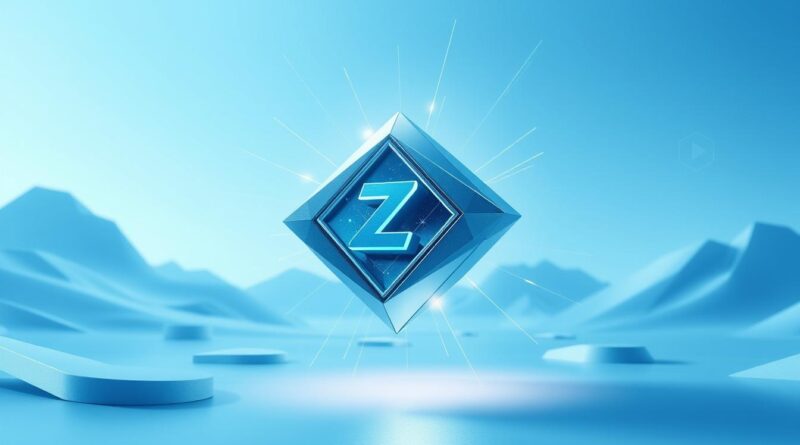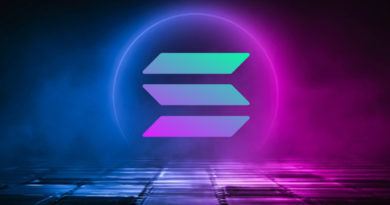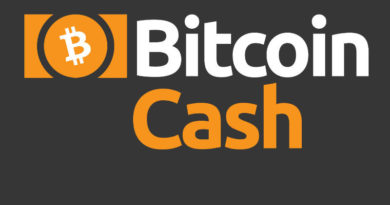Zcash (ZEC): Unlocking the Private Blockchain Transactions
Just 24 hours after its launch in 2016, Zcash (ZEC) hit a peak price of $5,841. This was a huge jump from its initial $2 million valuation. This rapid rise showed the huge interest in privacy-focused cryptocurrencies.
Today, Zcash is a major player in the blockchain world. It has a market cap of $1 billion and ranks 25th globally. It also handles $43 million in transactions every day. Zcash is fast, confirming transactions in just 75 seconds, while keeping user data private.
ZEC focuses on keeping transactions anonymous, but only 0.8% of its supply uses this feature. This shows a balance between wanting privacy and needing transparency. Zcash uses new tech to keep data safe, making it stand out in a world where privacy is key.
Key Takeaways
- ZEC’s price spiked to $5,841 in its first 24 hours, showing early excitement.
- Zcash’s 75-second block time is faster than Bitcoin’s 10 minutes.
- Only 0.8% of ZEC uses shielded addresses, showing a preference for openness.
- ZEC’s $43 million daily transaction volume shows its active role in blockchain payments.
- Zcash uses zk-SNARKs and Equihash to secure private transactions without slowing down the network.
What is Zcash (ZEC)?
Zcash (ZEC) is a privacy coin that works as a digital currency. It focuses on keeping financial exchanges private. It was launched in 2016, built on Bitcoin’s codebase but with a twist for privacy.
The Origin Story of Zcash
Zcash was created by experts from Johns Hopkins University and MIT. It started on October 28, 2016. It brought a new level of privacy with zk-SNARKs, a big step in zero-knowledge proofs.
The project split from Bitcoin to focus more on user privacy. In September 2023, a mining pool briefly controlled over 50% of the network’s power. This shows Zcash is always improving its security.
Key Features of Zcash
- Optional privacy: Users can pick between transparent and private addresses for their secure transactions.
- zk-SNARKs technology checks transactions without showing who sent or received them.
- It has a fixed supply of 21 million ZEC tokens, just like Bitcoin.
The Team Behind Zcash
Key people include:
- Zooko Wilcox: Founder and CEO of the Electric Coin Company (ECC)
- Zcash Foundation: Nonprofit that guides protocol development
- Johns Hopkins University researchers Matthew Green and others
20% of mining rewards go to fund development. This money is split between the Foundation, ECC, and grants.
The Technology Powering Zcash’s Privacy
Zcash leads in privacy with its blockchain technology. It keeps transactions secure by hiding who sent and received money. Here’s how it works:
Zero-Knowledge Proofs Explained
Zero-knowledge proofs (ZKPs) let users prove a transaction is valid without sharing any data. For example, a bank could verify funds exist without knowing the account balance. In Zcash, ZKPs confirm transaction rules without exposing personal info. This tech avoids tracking by third parties like advertisers or governments.
zk-SNARKs: The Technical Foundation
zk-SNARKs (Zero-Knowledge Succinct Non-Interactive Arguments of Knowledge) are Zcash’s signature tool. Forked from Bitcoin’s code in 2016, Zcash added zk-SNARKs to create shielded addresses transactions. In 2019, Zcash upgraded with Halo, reducing reliance on trusted setups and improving scalability. These proofs let miners verify transactions without seeing sender/receiver details.
Transparent vs. Shielded Transactions
| Type | Privacy | Use Case |
|---|---|---|
| Transparent | Public address/amount | Standard blockchain trackingability |
| Shielded | Full anonymity | Private financial activity |
Users can choose between these options. Shielded transactions offer more privacy but are slower and use more space. Gemini exchange data shows 11.8% of withdrawals used shielded addresses in 2020. This shows growing interest in privacy features.
How Zcash Differs From Bitcoin and Other Cryptocurrencies

Zcash and Bitcoin both use blockchain technology. But they handle privacy and transparency differently. Bitcoin’s ledger shows every transaction openly. Zcash, on the other hand, offers optional privacy with zk-SNARKs.
This technology lets users hide transaction details. Yet, it keeps the blockchain secure. Zcash stands out by focusing on privacy, finding a balance between openness and secrecy.
- Zcash uses zk-SNARKs for shielded transactions, contrasting Bitcoin’s fully transparent ledger.
- Both have a 21 million maximum supply, but Zcash’s Equihash algorithm differs from Bitcoin’s SHA-256 mining.
- Transaction speeds range from 6–20 TPS, slower than Bitcoin’s 7 TPS but with privacy benefits.
Zcash’s privacy features make it unique. Users can choose between transparent and shielded transactions. Most users, 99.9% of Zcash transactions remain traceable, prefer transparency. This flexibility is different from Monero’s mandatory privacy or Dash’s pseudonymity.
Zcash’s hybrid model is for those who need privacy sometimes but not always. It’s a choice for users who want flexibility without full anonymity.
- Consensus mechanism: Zcash uses a hybrid PoW/PoS system, transitioning to pure PoS by 2024.
- Regulatory challenges: Despite privacy focus, Zcash has been delisted by exchanges due to compliance concerns, unlike Bitcoin’s broader acceptance.
Zcash is a special altcoin that combines Bitcoin’s blockchain with advanced privacy. It’s a privacy-first option in the crypto world. It appeals to users who want privacy but don’t need full anonymity.
The Privacy Spectrum: Where Zcash Stands Among Privacy Coins
Privacy-focused cryptocurrencies have different approaches. Zcash falls in the middle, balancing openness and secrecy. It offers users the choice between private and public transactions. This makes Zcash stand out in a crowded field.
| Coin | Privacy Method | Transaction Type | Default Privacy |
|---|---|---|---|
| Zcash (ZEC) | zk-SNARKs | Shielded/Transparent | Optional |
| Monero (XMR) | Ring signatures + stealth addresses | Always shielded | Mandatory |
| Dash (DASH) | CoinJoin (PrivateSend) | Shielded via mixing | Optional |
Monero focuses on complete anonymity by default. Zcash, on the other hand, offers optional privacy. Dash uses mixing to hide transactions but leaves blockchain data traces. ZEC’s shielded transactions hide sender, receiver, and amount, but only 16% of transactions are private.
Zcash has a higher inflation rate (29.24%) than Bitcoin (3.91%). Its 2020 halving cut block rewards. All privacy coins face regulatory hurdles, as the FATF pushes for oversight of hidden transactions.
The Economics of Zcash
ZEC’s economic model combines Bitcoin’s scarcity with funds for privacy innovation. It has a 21 million supply cap and halves rewards every four years. This keeps the value stable in decentralized finance.
Each block reward is 1.5625 ZEC, given every 75 seconds. This ensures a slow release of coins while keeping the network safe.
supply and distribution model zec grows at projected inflation rates of in post-2025 halving by million circulated with newly minted that year. this scarcity aligns bitcoin design but allocates all mined to a development fund instead solely rewarding miners. mining rewards structure split into three pools:>
Miners get about 0.03 ZEC per block. ViaBTC has over half the hashrate. There are talks about switching to proof-of-stake, but nothing is confirmed.
the founder reward and development fund originally of all mined zec funded founders investors. by this shifted to zcash foundation electric coin company channeling resources into zk-snarks research protocol upgrades. model ensures long-term support for privacy advancements critical decentralized finance applications.>
Getting Started with Zcash (ZEC)

Ready to join the Zcash community? Here’s how to begin using this privacy-focused cryptocurrency. Start by getting ZEC through trusted exchanges like Coinbase, Binance, or Kraken. Most platforms need ID verification for purchases over $3,000 to follow U.S. rules.
Today, mining ZEC requires ASIC hardware. Standard computers are not efficient for making money.
Once you have ZEC, keep it safe. Use wallets like Wasabi Wallet or Zecwallet.lol for secure storage. These wallets offer transparent (t-) or shielded (z-) addresses.
Shielded transactions hide all details, while transparent ones show basic information.
| Transaction Type | Privacy | Speed |
|---|---|---|
| Transparent | Basic details visible | ~2-5 minutes |
| Shielded | Fully private | ~10-15 minutes |
When sending ZEC, check the address type and fees. Shielded transactions cost more because of complex encryption. Always double-check the address format—t- for transparency and z- for privacy. Lost funds can’t be recovered once confirmed on the blockchain.
Explore official resources like the Zcash documentation or join the Zcash community on Reddit for support. Remember: selective disclosure options let users share transaction proofs when needed, balancing privacy and compliance. Start your journey today with this versatile digital currency.
Wallets and Storage Solutions for Zcash
Keeping your ZEC safe means picking the best storage. Hardware and software wallets have their own benefits. They help keep your crypto private and easy to get to.
Hardware Wallet Options
- Ledger Nano S: It works with over 1,000 cryptocurrencies, including ZEC. It has a 24-word recovery phrase and PIN for safe transactions. It’s small, weighing 16.2 grams, and easy to carry.
- Trezor Model T: It supports shielded transactions and has a touchscreen for better security. It’s a top choice for those who value both physical and digital privacy.
Software Wallet Solutions
Desktop and mobile apps offer more flexibility. ZecWallet, the official Zcash client, needs a full blockchain download but keeps your transactions private. Multi-currency wallets like Exodus and Coinomi also support ZEC and many other cryptos. Make sure they support shielded transactions to keep your privacy.
Best Practices for Securing Your ZEC
- Use hardware wallets for long-term storage to avoid online risks.
- Enable 2FA and biometric locks on software wallets.
- Avoid reusing addresses to prevent metadata leaks.
- Regularly update software to patch vulnerabilities.
Hot wallets are riskier because they’re online. For big ZEC amounts, go for offline storage.
Real-World Applications and Use Cases
Zcash’s blockchain goes beyond theory. It’s used in real-life situations where keeping financial info private is key. From sending money across borders to using decentralized finance (DeFi), ZEC helps users stay private while being transparent.
“Privacy is not about secrecy—it’s about control. Zcash lets users choose what to share while maintaining trust in transactions.”
Here are some key uses:
- Private cross-border remittances: People send money abroad using Zcash’s shielded addresses. This avoids high fees and keeps their transactions private.
- Decentralized finance platforms: DeFi apps like Aave and dYdX use Zcash for private lending and borrowing. This keeps the amounts and parties involved secret.
- Business confidentiality: Companies use shielded addresses to keep their trade secrets and financial dealings private.
- Activist and journalist safety: Users in places with strict rules use Zcash to hide their transactions. This helps them avoid censorship or backlash.
The Zcash network’s 2018 Sapling upgrade made transactions 90% smaller. This made them faster and cheaper. Now, ZEC is good for everyday use, not just special cases. Developers can also build privacy-focused apps using Zcash’s open-source code. These apps range from voting systems to supply chains needing secure data.
As more people use blockchain, Zcash’s zk-SNARKs are being tested in healthcare and identity checks. This shows privacy and compliance can work together. Zcash is leading the way in creating new financial tools that balance privacy and openness.
Regulatory Landscape and Compliance Challenges

Regulatory pressures on privacy coins like Zcash have reached a critical point. The U.S. SEC is closely watching the Electric Coin Company, Zcash Foundation, and Zcash Community Grants. These groups receive free ZEC rewards. Recent actions, such as Binance’s restricted listings and price dips—ZEC fell to $19.91—reflect market anxiety over enforcement risks.
Global rules vary widely. Japan and South Korea ban privacy-focused transactions. The EU’s MiCA framework demands AML checks. U.S. regulators are looking into how block reward distributions follow securities laws, using the Howey Test.
Zcash’s zk-SNARKs enable selective transparency. This allows users to share transaction details when needed. It balances privacy with compliance.
- Japan/South Korea: Privacy coins banned entirely
- EU: MiCA mandates traceability for crypto transactions
- U.S.: SEC probes ongoing into block reward models
Anti-money laundering concerns are key. Zcash’s viewing keys let users prove transaction legitimacy without exposing full histories. This feature is getting attention during Binance’s recent review. Yet, the SEC’s stance threatens foundational entities, risking asset freezes or development halts.
Transitioning to Proof-of-Stake could reduce legal risks. But it may complicate fungibility.
As regulators push for oversight, Zcash’s path forward depends on technical adaptations and proactive engagement. Without clarity, the sector faces fragmented adoption and market volatility. This highlights the need for balanced innovation that respects both privacy rights and legal mandates.
The Future Roadmap of Zcash
Zcash is growing with a clear plan to boost privacy and use. It’s working on technical updates to stay ahead in the privacy coin market. The Halo 2 update will make Zcash safer by not needing trusted setups.
By 2023, Zcash will switch to a hybrid proof-of-stake model. This will cut down on energy use and keep the network decentralized. By 2025, Zcash hopes to double its monthly users and become one of the top 10 coins by market cap.
In 2023, Zcash will launch mobile wallets for iOS and Android. This will make it easier for more people to use Zcash.
Upcoming Technical Improvements
Key upgrades include:
- Halo 2: Eliminates legacy cryptographic dependencies
- Proof-of-stake transition roadmap draft (July 2023)
- Expanded mobile app development with new SDKs
Community Governance and Decision-Making
The Electric Coin Company (ECC) leads development through OKR cycles. The community helps decide what’s important. Soon, Zcash Foundation and contributors will take on more roles.
A plan for funding after 2024 is being discussed. This will help Zcash stay strong in the future.
Long-Term Vision and Challenges
By 2032, Zcash wants 1 billion users and to be in the top five by market cap. It faces challenges like rules from governments and competition from Monero.
Zcash is open-source and has clear rules to build trust. In 2023, ECC will focus on making Zcash stable and innovative again.
Investment Considerations for Zcash
ZEC offers a unique chance in the digital currency world. It combines privacy with blockchain innovation. Investors need to think about its privacy focus and the market’s overall state. ZEC stands out with zk-SNARKs, but it faces regulatory hurdles and market ups and downs.
- Opportunities: ZEC’s privacy model meets growing demand for secure transactions. Its market value of over $325 million in 2019 shows big players are interested. Upcoming tech upgrades, like harmony mining, could increase its use.
- Risks: The SEC and IRS might bring more rules, which could be a problem. Being outside the top 10 cryptocurrencies means ZEC might be harder to sell when prices drop. Monero and others also compete for privacy coin users.
- Compliance: ZEC follows FATF rules and works with Chainalysis to meet regulations. But, its ties to the U.S. might limit its freedom.
Investors should think about taxes too. Self-Directed IRAs let ZEC grow tax-free, but there might be delays. Long-term plans are best for those willing to wait for ZEC’s growth. Diversifying in other cryptocurrencies can also lower risks.
ZEC’s worth depends on its ability to grow privacy features while staying in line with laws. Experts say early 2019 was a good time to invest because of upcoming updates. But, watching the SEC’s moves is key.
Conclusion
Zcash has become a top privacy coin, launched in 2016. It uses zk-SNARKs for optional privacy in transactions. This gives users control over their financial data, balancing privacy with openness.
Unlike Monero, which always keeps transactions private, Zcash lets users choose. This makes it appealing for those who want flexibility in finance.
Zcash has faced regulatory issues and concerns about energy use. Yet, it keeps pushing the crypto world forward with new tech. It’s working on updates and might switch to proof-of-stake to be more sustainable.
With a 21 million supply cap, Zcash is among the top cryptocurrencies. Its ecosystem is key for those who value privacy in finance.
As blockchain use grows, Zcash’s privacy tools are important. They could change how finance works online. The project is exploring new tech, like zk-STARKs, to make transactions safer and private.
Zcash shows the ongoing debate about privacy and openness in digital finance. Its journey shows the crypto world’s drive for innovation. It aims to respect user freedom while facing real-world issues.




